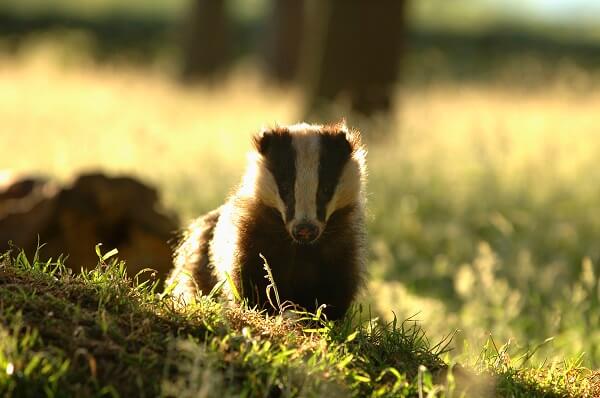In Search of Mr Brock

Today (6 October) is National Badger Day and to mark the event, Frieda Rummenhohl from Herts and Middlesex Wildlife Trust tells us about the secret life of a British icon.
Deep in the woods of Tewin Orchard and Hopkyns Wood Nature Reserve, among the apple and pear trees, the bluebells in spring and the butterflies, birds and bats, lies the home of Mr Brock.
The badger is an iconic species – it’s not without a reason that it adorns the logo of The Wildlife Trusts. It is a familiar sight in literature and our heritage – think of Badger from Kenneth Grahame’s The Wind in the Willows – yet, it is rarely seen by most of us. Even though they are our biggest mammal and one of the UK’s apex predators, badgers are very shy and elusive. They are also nocturnal, so unless you’re up for a late night, your chances of seeing one in the wild are rather slim.
Badgers live in underground burrows, so-called setts, which they dig with their long, powerful claws. A sett can be hundreds of years old and passed down through generations. That doesn’t mean it’s messy – in fact, badgers are quite tidy and like a neat and clean home. Much like we change our bedsheets, badgers will drag out their old bedding – hay, grass and leaves – and replace it with newly collected materials. They are very social and live in a large family groups or ‘clans’. They spend a lot of their time muzzling, nuzzling and grooming one another which helps them build strong family bonds.
As omnivores, badgers are extremely adaptable and opportunistic. While their food of choice is earthworms – they can gobble up more than 200 a night – they will readily turn to berries, fruit, nuts, insects, small mammals and even fish. They need a good reserve to get through winter. Even though they don’t hibernate, they become less active, sleep longer and deeper and can stay in their burrows for days at a time.
Thanks to a very special reproductive technique called delayed implantation, badgers are able to give birth at the most suitable time of year to ensure the best chance of survival for their offspring. It means that, regardless of the time of mating, the female badger – or sow – can delay her gestation. The cubs are usually born towards the end of winter, around February, so that they are old enough to venture out in spring.
Badgers are incredible creatures and seeing them in the wild is a fantastic experience. Herts and Middlesex Wildlife Trust offers exclusive badger watching evenings at its badger hide at Tewin Orchard and Hopkyns Wood Nature Reserve between March and October. Find out more at hertswildlifetrust.org.uk/badgerwatching.

